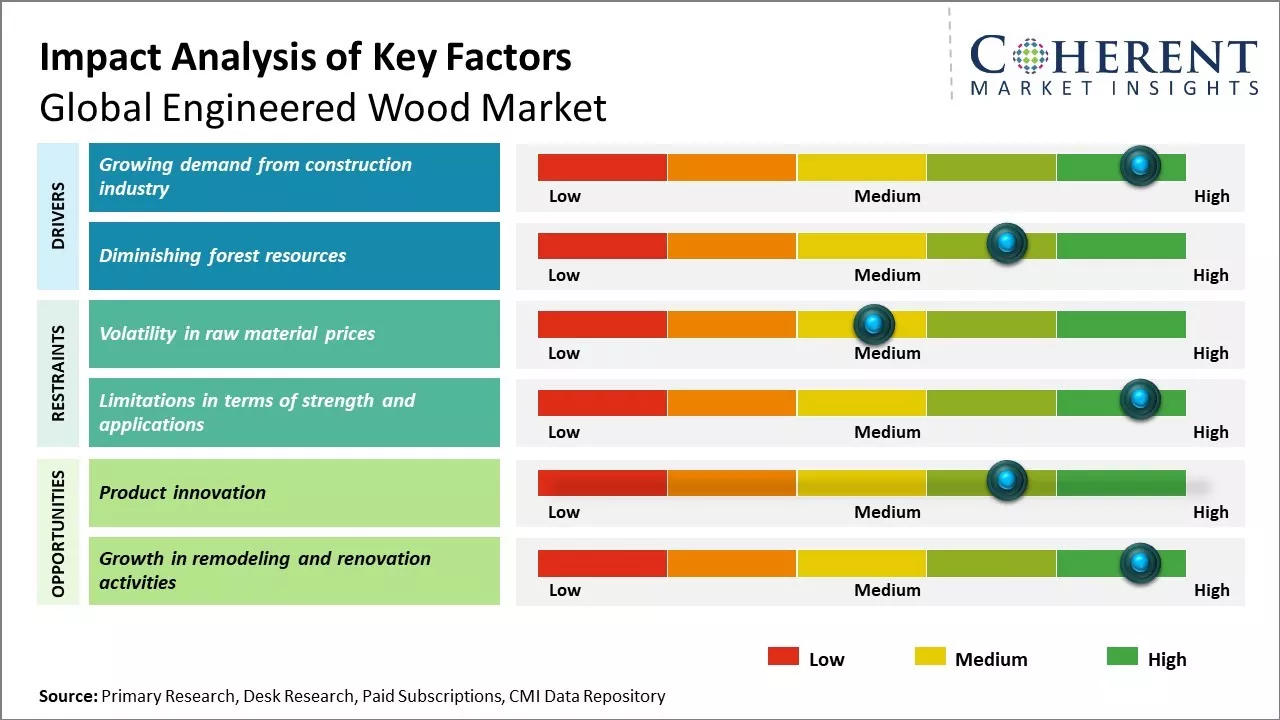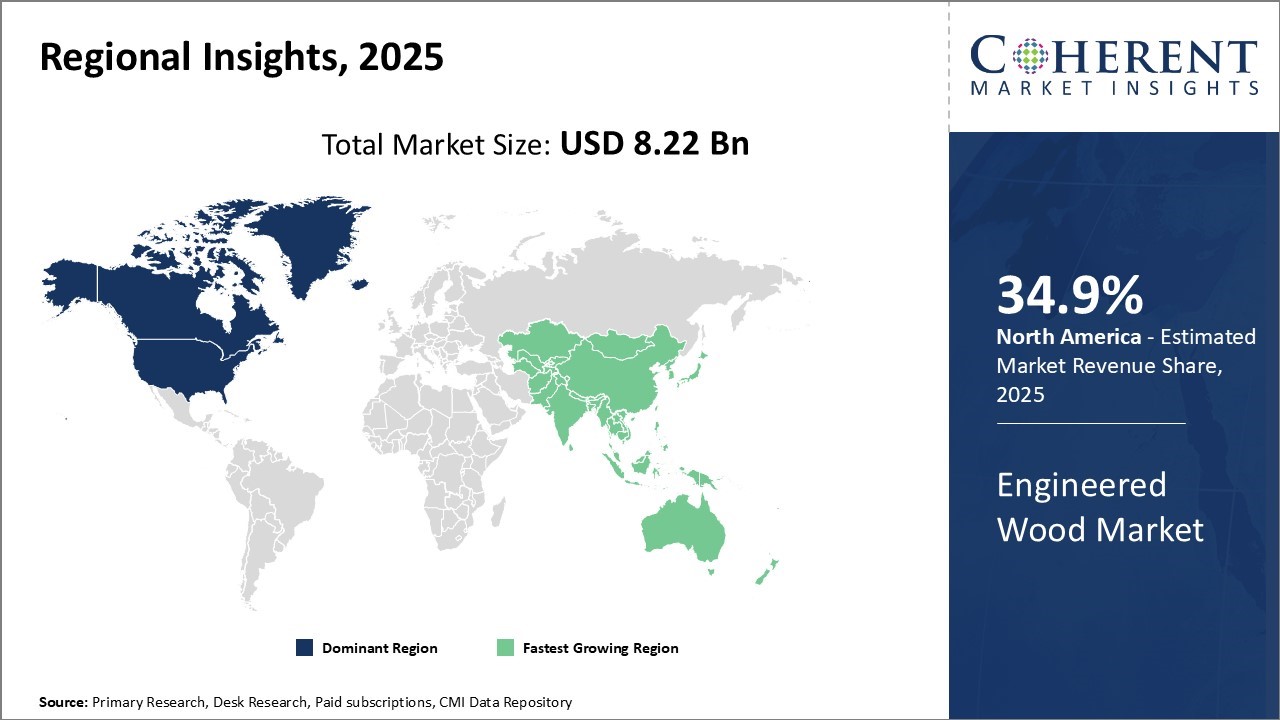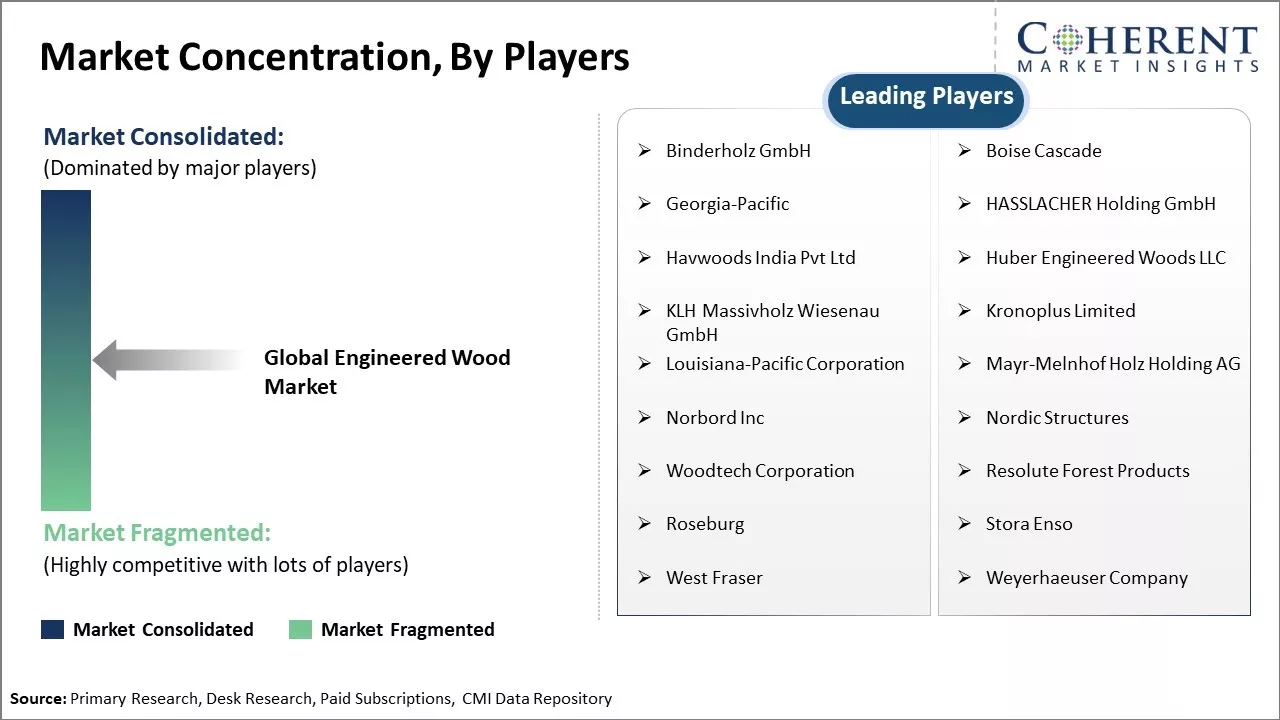The engineered wood market is estimated to be valued at USD 8.22 Bn in 2025 and is expected to reach USD 13.65 Bn by 2032, exhibiting a compound annual growth rate (CAGR) of 7.5% from 2025 to 2032.

To learn more about this report, Download Free Sample
The market has been witnessing steady growth over the past few years driven by increasing residential and non-residential construction activities globally. The demand for engineered wood is expected to increase significantly during the forecast period driven by rising consumer preference for sustainable and eco-friendly construction materials. The market is gaining more acceptability over solid wood owing to advantages such as dimensional stability, strength, uniformity, and ability to be easily machined into various shapes and sizes. Additionally, supportive government policies and regulations pertaining to use of engineered wood especially in developed markets will further aid the engineered wood market growth.
|
Current Events |
Description and its impact |
|
Macro-Level Economic and Environmental Policies |
|
|
Regional Geopolitical Developments |
|
|
Regional Infrastructure and Construction Trends |
|
Uncover macros and micros vetted on 75+ parameters: Get instant access to report
Plywood is expected to contribute the highest share of the market and it is expected to hold 33.9% of the market share in 2025. Plywood has widespread use across various end-use industries. Plywood possesses excellent structural integrity compared to solid wood boards of similar thickness. This is because, its cross-laminated construction allows it to uniformly distribute stress and weight, making it very strong yet lightweight. Plywood finds applications in construction activities like wall sheathing, flooring decking, and roof sheathing due to its dimensional stability and rigidity. It is durable enough for outdoor use and absorbs moisture and swelling better than solid wood. In furniture making, plywood is used to create chair seats, tabletops, and other components given its ability to maintain its shape even under pressure or weight. For instance, in April 2025, T2EARTH® introduced OnWood® Plywood, the most advanced eco-friendly fire-retardant treated wood (FRTW) available. OnWood® offers unmatched strength, Class A fire retardancy, and sustainable design—all without using toxic chemicals. Builders and developers can now access a healthier, high-performing, and affordable alternative ideal for fire-prone environments.
Residential is expected to contribute the highest share of the market. This segment is expected to hold over 45.9% of the market share in 2025 due to the exponential growth of the housing industry worldwide. Expanding urban populations and the increasing need for living spaces have enhanced the demand for residential construction globally. Wide-scale afforestation programs complemented by sustainable wood production techniques have enhanced the availability of engineered wood products for the residential construction sector. Their dimensional stability, workability, and design flexibility make them suitable for wall framing, flooring systems, roof trusses and other structural elements in homes. This has augmented their adoption compared to traditional woods. For instance, in April 2025, AHF Products launched a line of U.S.-made unfinished solid and engineered hardwood flooring. The company mills Bruce unfinished solid and engineered hardwood in the U.S.A., ensuring superior durability, consistent quality, and faster project availability for residential customers.

To learn more about this report, Download Free Sample
North America dominates the engineered wood sector as residential and non-residential construction drive strong demand, supported by rapid urbanization and infrastructure growth. Builders increasingly adopt engineered wood products such as OSB, LVL, glulam, plywood, and CLT due to their cost-efficiency, sustainability, dimensional stability, and precision in prefabrication. Strict environmental regulations and expanding green building efforts are pushing adoption further. Manufacturers are using smaller-diameter trees and lower-grade fiber to expand raw material supply and reduce waste, while new mass-timber technologies like Superwood continue to gain traction. For instance, in November 2024, Weyerhaeuser Company announced plans to invest approximately $500 million to build a new, state-of-the-art TimberStrand® facility near Monticello and Warren, Arkansas, aiming to expand its engineered wood products (EWP) capacity in the U.S.
Rapid urban growth in China, India, and Southeast Asia is driving widespread residential and commercial development, prompting builders to choose engineered wood for its cost-efficiency, durability, and structural benefits. Governments across the Asia-Pacific region are actively promoting sustainable forestry and green building policies, offering incentives and certifications that align with consumer preferences and environmental goals. These efforts are boosting demand for renewable, low-impact construction materials and accelerating the adoption of engineered wood in large-scale projects and furniture manufacturing. For instance, Action Tesa, one of India’s largest manufacturers of MDF, HDHMR, and particle boards, launched sustainable HDHMR boards. The company produces these engineered wood products without depleting natural resources, demonstrating a commitment to sustainability and actively helping to reduce the carbon footprint.
The U.S. is actively adopting mass timber products such as CLT and glulam in mid-rise commercial and office buildings. Developers are launching projects in cities like Dallas, while plans for the tallest timber skyscraper in Milwaukee reflect growing demand from investors and tenants for sustainable construction. Meanwhile, InventWood planned to begin industrial-scale production of “Superwood” by mid-2025—an engineered material that is stronger than steel yet lighter—attracting interest for use in structural elements and facades across multiple construction sectors. For instance, in July 2025, U.S.-based company IMMCO LLC, operating as UNIFLOW, introduced the AcuPump™ System, a cutting-edge solution engineered to precisely and efficiently apply single-component liquid polyurethane (LPU) adhesives. Designed specifically for the engineered wood market, the AcuPump™ establishes a new standard in adhesive dispensing technology.
Rapid urbanization and the expansion of real estate developments—including affordable housing and commercial infrastructure—are driving demand for engineered wood products like plywood, MDF, and particleboard in India’s construction and furniture sectors. Builders and designers prefer these materials for their structural stability, versatility, and cost-efficiency. Manufacturers are adopting eco-friendly forestry practices, using recycled wood fibers, and implementing waste-reduction processes to meet growing environmental awareness. They are also securing certifications such as FSC and BIS to ensure traceable supply chains and meet green consumer expectations. For instance, in May 2025, SPAN FLOORS launched an exclusive engineered wood flooring collection designed specifically for staircases. Targeting modern Indian homes, the company offers a refined alternative to marble that combines timeless design, comfort, and safety.

To learn more about this report, Download Free Sample
| Report Coverage | Details | ||
|---|---|---|---|
| Base Year: | 2024 | Market Size in 2025: | USD 8.22 Bn |
| Historical Data for: | 2020 To 2024 | Forecast Period: | 2025 To 2032 |
| Forecast Period 2025 to 2032 CAGR: | 7.5% | 2032 Value Projection: | USD 13.65 Bn |
| Geographies covered: |
|
||
| Segments covered: |
|
||
| Companies covered: |
Binderholz GmbH, Boise Cascade, Georgia-Pacific , HASSLACHER Holding GmbH, Havwoods India Pvt Ltd, Huber Engineered Woods LLC, KLH Massivholz Wiesenau GmbH, Kronoplus Limited, Louisiana-Pacific Corporation, Mayr-Melnhof Holz Holding AG, Norbord Inc, Nordic Structures, Woodtech Corporation, Resolute Forest Products, Roseburg, Stora Enso, West Fraser, and Weyerhaeuser Company |
||
| Growth Drivers: |
|
||
| Restraints & Challenges: |
|
||
Uncover macros and micros vetted on 75+ parameters: Get instant access to report
Builders and consumers increasingly prefer engineered wood due to its reduced environmental footprint: it uses smaller trees, wood by-products, and supports recycling. Recent innovations—such as poplar trees genetically tailored to produce high-performance wood without energy-intensive processing—enhance durability and carbon storage. These materials align with green building certification standards and mitigate deforestation, making engineered wood a sustainable alternative in both residential and commercial sectors.
Developers are investing heavily in modular construction techniques that rely on lightweight engineered wood components to speed up build time and reduce costs. Cross‑laminated timber (CLT), glulam, and other mass timber technologies are making headway in mid‑rise and high‑rise construction, showcasing advantages in structural efficiency, fire resistance, and sustainability. These trends are accelerating engineered wood adoption as a mainstream building material globally.
Rapid urbanization and growing infrastructure needs worldwide open significant opportunities for engineered wood in both commercial and residential sectors. Developers increasingly prefer engineered wood for its structural reliability, cost efficiency, and sustainability. Mass timber products like CLT and glulam are especially attractive for mid-rise and high-rise buildings, while engineered panels and plywood meet demand in affordable housing, renovations, and furniture manufacturing, driving market growth.
Share
Share
About Author
Yash Doshi is a Senior Management Consultant. He has 12+ years of experience in conducting research and handling consulting projects across verticals in APAC, EMEA, and the Americas.
He brings strong acumen in helping chemical companies navigate complex challenges and identify growth opportunities. He has deep expertise across the chemicals value chain, including commodity, specialty and fine chemicals, plastics and polymers, and petrochemicals. Yash is a sought-after speaker at industry conferences and contributes to various publications on topics related commodity, specialty and fine chemicals, plastics and polymers, and petrochemicals.
Missing comfort of reading report in your local language? Find your preferred language :
Transform your Strategy with Exclusive Trending Reports :
Frequently Asked Questions
Joining thousands of companies around the world committed to making the Excellent Business Solutions.
View All Our Clients